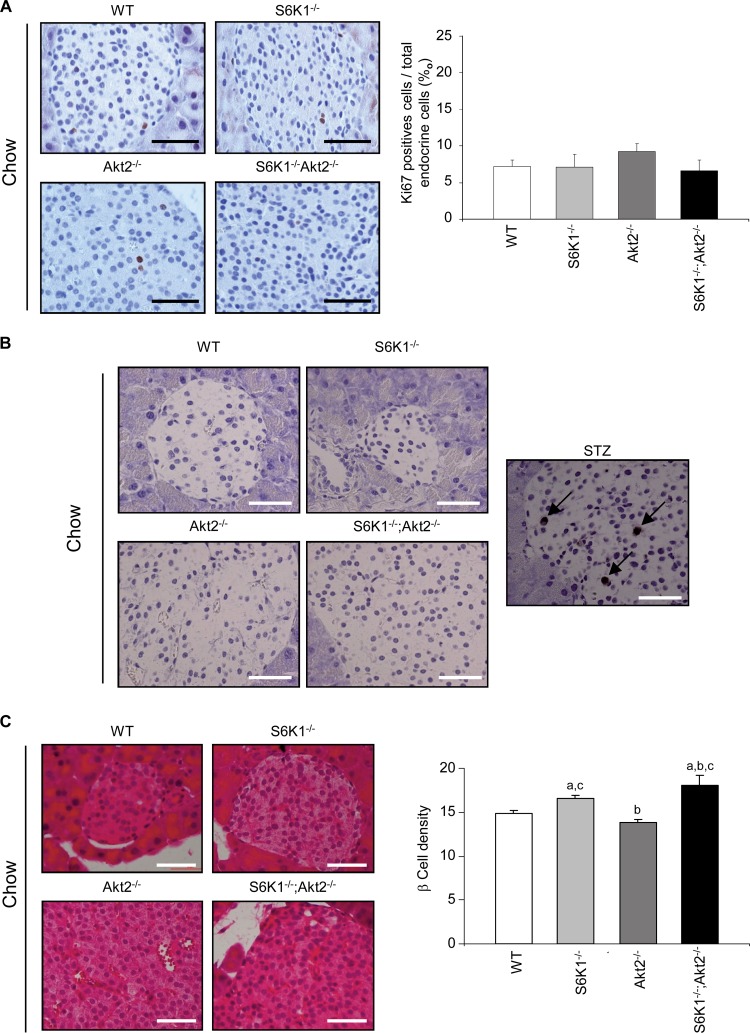Fig 5.
S6K1−/− Akt2−/− mice have impaired β-cell growth. (A) Histological analysis of pancreatic sections from 6-month-old mice of the indicated genotypes starved for 6 h. The sections were immunostained for Ki67 and counterstained with hematoxylin. Shown are representative islets (left) (scale bar, 50 μm) and quantification of Ki67-positive cells over total endocrine cells (n ≥ 6) (right). (B) TUNEL staining in pancreas sections from 6-month-old mice of the indicated genotypes starved for 6 h. The pancreas from a mouse treated with streptozotocin (STZ) was used as a positive control. Apoptotic cells are stained brown; the arrows indicate representative cells. Scale bars, 50 μm. (C) Histological analysis of pancreatic sections from 6-month-old mice of the indicated genotypes starved for 6 h. The sections were stained with hematoxylin and eosin. Shown are representative islets (left) (scale bars, 50 μm) and quantification of β-cell density assessed by counting the nuclei in a 1,720-μm2 islet area (n ≥ 4) (right). All values are expressed as means and SEM. a, P < 0.05 versus the wild-type group; b, P < 0.05 versus the S6K1−/− group; c, P < 0.05 versus the Akt2−/− group.

